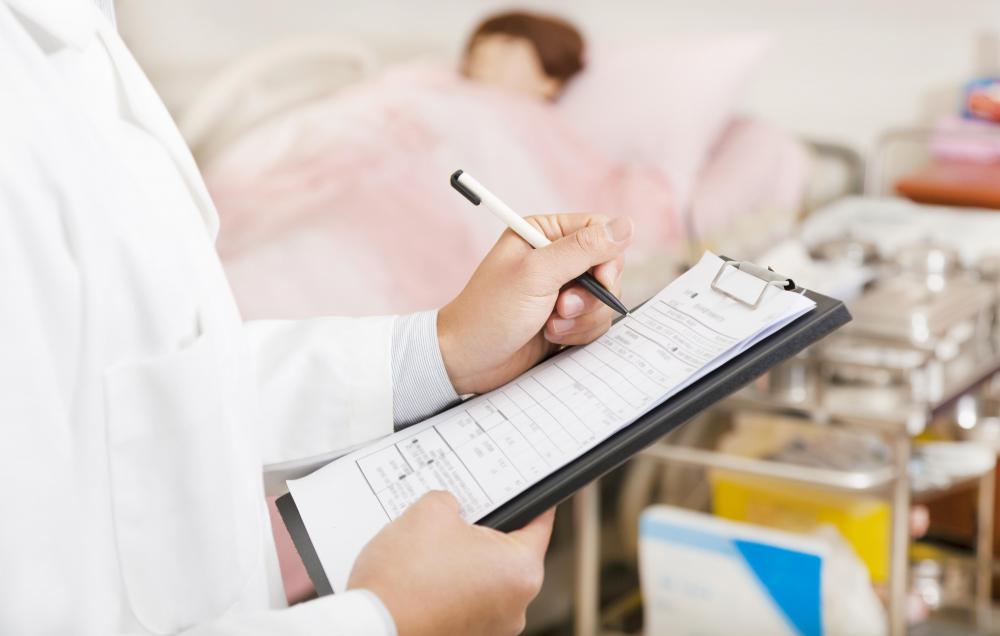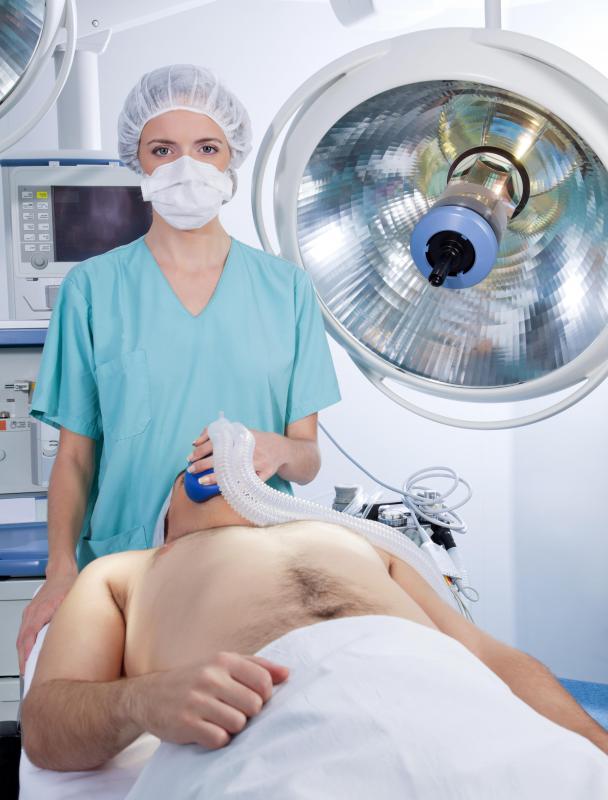At WiseGEEK, we're committed to delivering accurate, trustworthy information. Our expert-authored content is rigorously fact-checked and sourced from credible authorities. Discover how we uphold the highest standards in providing you with reliable knowledge.
What is Incentive Spirometry?
Incentive spirometry is a clinical technique which is used to help keep the lungs in good condition after surgery or when a patient has a chronic pulmonary condition. It involves the use of an incentive spirometer, a medical device which provides feedback as a patient breathes so that the patient can set and achieve goals for lung function. People preparing for surgery may be informed about incentive spirometry so that they will be able to start immediately after the surgery, and people with conditions like chronic obstructive pulmonary disease (COPD) and asthma may be given instruction in incentive spirometry so that they can use it as part of their disease management problem.
The incentive spirometer includes a breathing tube and mouthpiece attached to a gauge. The patient breathes deeply into the mouthpiece, causing the gauge to rise, and then holds the breath for at least three seconds before exhaling. This is repeated several times, and is done multiple times every hour. Patients are usually given a target on the gauge to shoot for, and their performance on the incentive spirometer may be marked in their charts so that their doctors can monitor their lung function.

Using an incentive spirometer exercises the lungs and encourages the alveoli in the lungs to fully inflate. Patients can encounter pulmonary problems very rapidly after surgery without well-exercised lungs, and incentive spirometry is designed to prevent this. Any surgery where someone is under general anesthesia for an extended period or where the lungs are operated on calls for incentive spirometry along with monitoring of breath sounds to confirm that the lungs are functioning well, and this starts as soon as possible after the patient wakes up and goes into the recovery room.

After being sent home, patients are usually encouraged to keep using incentive spirometry during recovery at home, and to contact a doctor if they notice changes in lung function or other problems which might indicate that surgical complications are occurring. Surgeons would much prefer to talk with their patients about minor problems than to have a patient wait too long because she or he “doesn't want to be a bother,” and people should not hesitate to call if they have concerns.

After using an incentive spirometer, it is important to wash it out. Some come with disposable mouthpieces which should be periodically changed as they are usually not designed to be cleaned. Because the device cannot be sterilized, it is not designed to be shared between patients.
AS FEATURED ON:
AS FEATURED ON:

















Discussion Comments
I think that patients who complain about sleep apnea or similar breathing difficulty should take pulmonary function tests.
Special devices and mouthpieces are used to test the effectiveness of air flow in and out of the lungs and rule out the possibility of lung disease.
I had sleep apnea for a long time before knowing what it was. Finally my doctor had me take these tests and they revealed the condition; at least it wasn’t lung disease.
I only wish that I had known about the tests earlier, so I would have quit fretting that I had something like a heart condition.
Post your comments